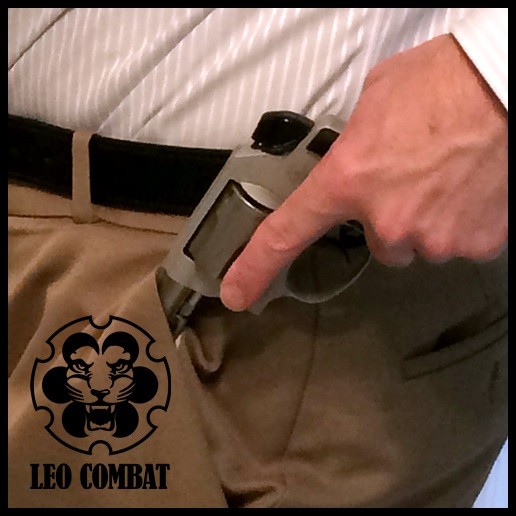Why the Pocket-Safe Hammer Shroud?
Why have I spent the last year—and thousands of dollars—coming up with a concealed carry hammer shroud to solve a problem that Smith & Wesson solved in about 1952?
I’m a great believer in concealed carry. And the best concealed carry gun is the one you actually carry. For me, much of the time, that means a Smith & Wesson 360PD in a pants pocket. (Before you ask: yes, I train with full power .357. Not a whole lot, I admit! But I do.) That gun came with a trigger pull so heavy that my 12-lb scale maxed out before I could even budge it. And the pull is like of “lumpy,” too—the sear geometry seems to vary a bit during the cycle such that the pull weight goes up and down.
That’s fine for a close-quarters shot, which is, after all, the most likely use for any concealed-carry gun. But as long as I’m preparing for the relatively unlikely mugging, I like to also be prepared for another unlikely scenario: the mall or theater mass-shooting. And for the distances that would involve, a lumpy, heavy trigger pull is never going to work. Single action is plainly superior for any long shot. On top of that, I usually find my wife “borrowing” my guns on date night (which means the range, of course), and she likes a spur hammer, too.
So that had me looking at the options for hammer shrouds. There are the “humpback” models like the 638 with the integral hammer shroud. I personally find them kind of ugly, and the little nub of the hammer that’s exposed would be difficult to operate in a critical situation (and difficult for my wife to work, ever). There are Bianchi Lightning Grips (if you can find them) with the same problems. And there are the Waller and Sons shrouds, which require gunsmith installation and permanent modification of your frame—and still leave you with a little nub. Otherwise, we’re back to the “hammerless” models
None of the options really “worked” for me. So I bought a little chunk of plastic and I attacked it with my Dremel, and I carved a little hammer shroud that grabbed onto the hammer spur but popped off when I pulled the trigger. That first experiment looks nothing whatsoever like what you see today—there were a lot of failed prototypes. But once I had something that worked for my own everyday carry, I wanted to bring it to you. It pops off for a double-action shot, and you can easily rip it off to take advantage of the single-action option.
I want to change the way people think about concealed-carry revolvers!


Leave a Reply